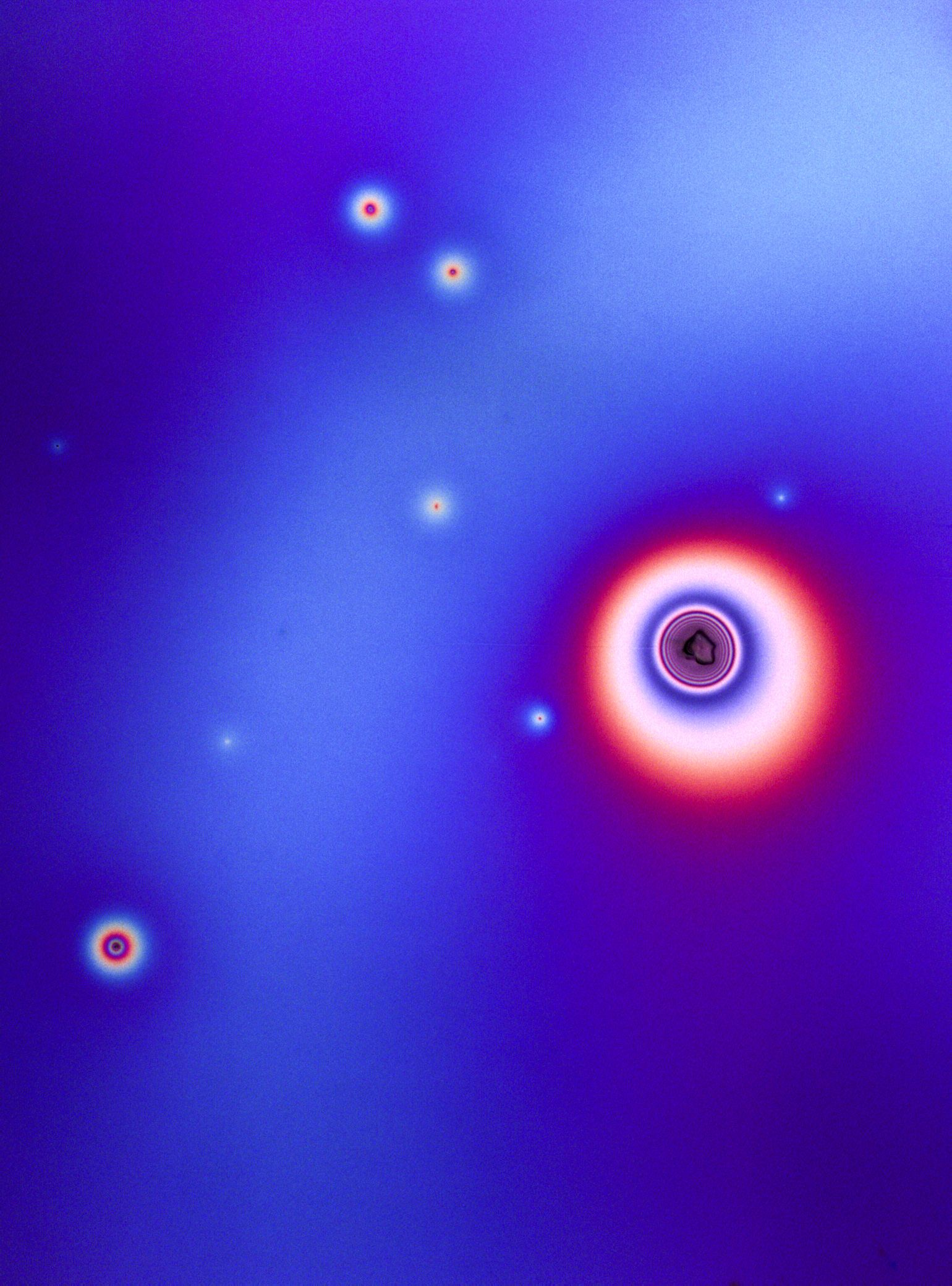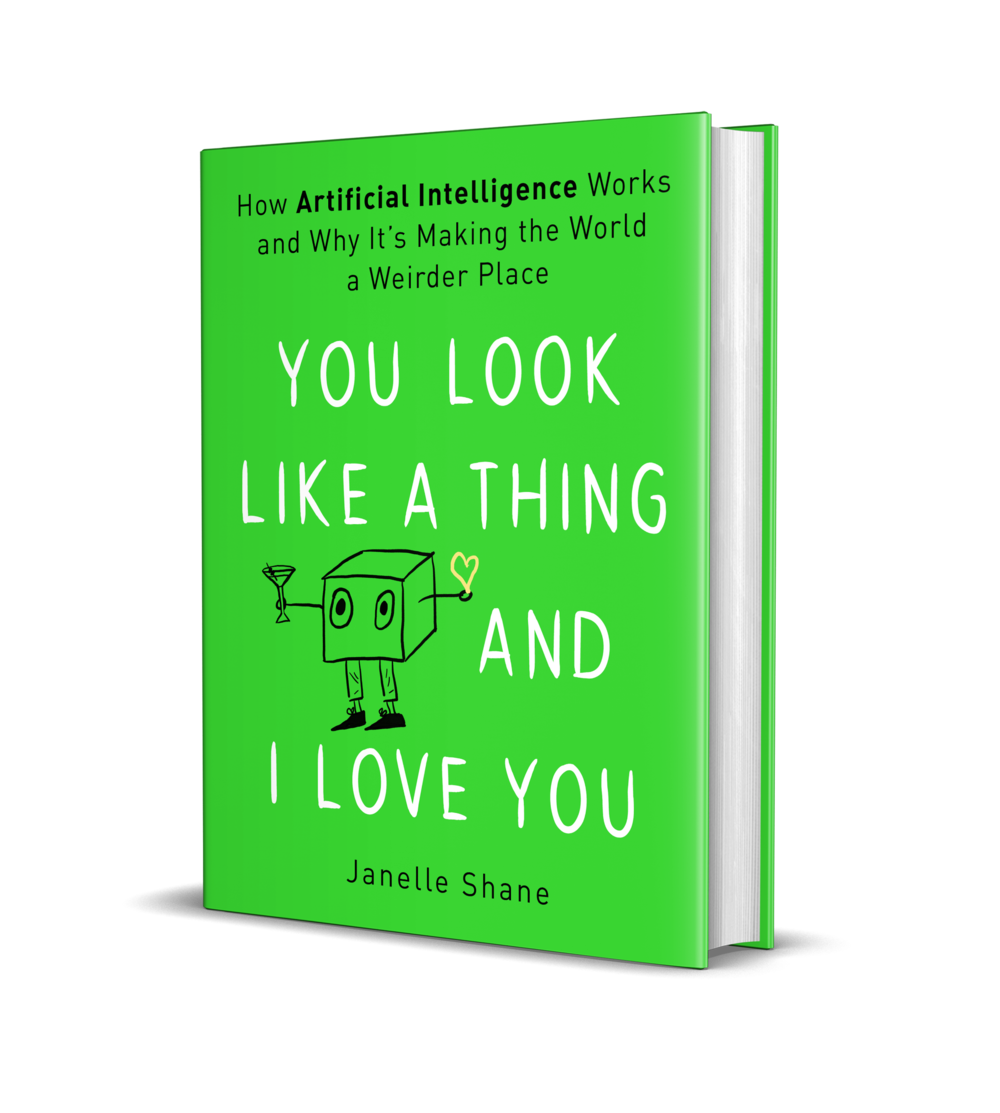Monday August 19, 2013

Thin-film effects, viewed under a microscope, imitate the night sky. What you see here is a flat surface that has a few defects on it (probably pieces of dust), covered with a thin, transparent film. According to the thickness of the film, you get different colors reflected back - this is the same phenomenon that makes rainbow colors in thin soap bubbles. From the colors, you can see how the film mounds up over the areas that have defects, producing closely-spaced bands of color like a topographic map. There’s no dye or pigments here - all the colors are from this soap bubble effect, relying on the interference of light waves. This sort of pigment-less color, called structural color, can also be seen in iridescent bird feathers, pearls, opals, and many butterfly wings.
Kind of looks like a constellation of a unicorn head, to me.


